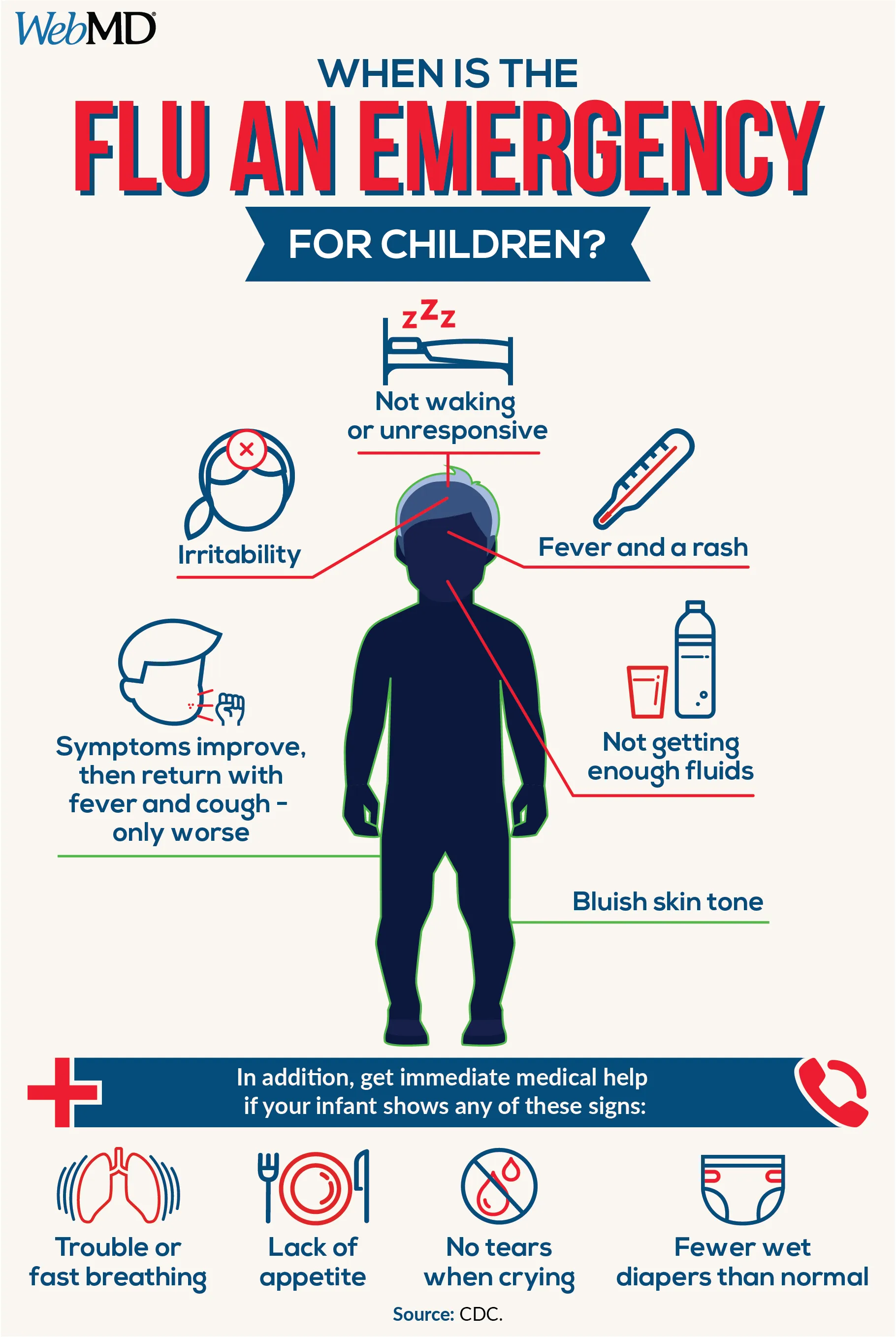Flu Season: What to Know This Yea

Editor's note: This story was most recently updated Dec. 13, 2019 with new flu statistics and outbreaks.
The flu season -- which got off to an early start -- is ramping up across the country. "All regions of the country are seeing elevated levels of flu-like illness," the CDC says in its latest update. It's widespread in 23 states, including parts of the South, West, and Northeast.
The agency estimates there have been at least 2.6 million flu illnesses, 23,000 hospitalizations and 1,300 deaths from flu so far this season. That includes 10 children who have died from flu.
Three children have died in Texas. Two of the three did not have a flu shot, according to data provided by the state's Health and Human Services Department. No information was available on the third death.
A baby in Arizona who was too young to get the flu vaccine was also among the latest fatalities.
Officials said that a "B" strain of virus has been more prevalent early in the season, which is unusual for this time of year. The "B" virus has been diganosed more among children and young adults up to 24 years old, while an "A" virus has been more common among adults 65 and older.
CONTINUE READING BELOW
"It’s difficult to predict the flu season, but CDC flu forecasts suggest flu activity will continue to increase in the next few weeks with a 40% chance that activity will peak in December, which would be relatively early compared to most seasons," said CDC spokesman Scott Pauley.
Public health officials are reminding everyone to get a flu shot as case counts ramp up.
The flu is a contagious disease, and it can cause mild to severe symptoms along with life-threatening complications, even in young, healthy children and adults. Since 2010, the flu has killed from 12,000 to 79,000 people annually in the U.S. and affected about 9.3 million to 49 million annually.
Here is what else to know about flu.
What is the latest news on the flu season?
The CDC reported increasing activity for the country overall in its most recent report for the week ending Dec. 6. Twenty-three states reported widespread activity: Alabama, Arizona, California, Connecticut, Georgia, Idaho, Indiana, Kentucky, Louisiana, Maryland, Massachusetts, Nebraska, Nevada, New Mexico, New York, North Carolina, Oregon, Pennsylvania, South Carolina, Tennessee, Texas, Virginia and Washington. See the CDC map here.
CONTINUE READING BELOW
When does flu season begin and end?
Although you can get the flu anytime, flu season starts in October and can go as late as March and even April. But it usually peaks in the U.S. in February, Schaffner says.
When is the best time to get a flu shot?
In general, everyone over 6 months of age should get vaccinated -- the earlier the better for getting the vaccine. Late September is a good time, Schaffner says, and even into October and beyond. With the length of last year’s flu season, the idea of booster shots has been discussed. Schaffner says that idea is not backed by studies.
How good a match will this year's vaccine be against the flu virus?
There are many strains of the two types of flu viruses -- A and B -- that infect humans. In order to have flu shots ready for flu season, experts have to decide, months in advance, which strains to include in the vaccine. Because strains can change quickly, the vaccine is not always a good match.
CONTINUE READING BELOW
The CDC's Scott Epperson, MD, said that this year's vaccine looks like it will be a good match and offer protection against the H1N1 and H3N2 strains that are circulating. These components have been updated from last year's vaccine to better match the strains being seen.
The vaccine also seems well-matched to the two B strains that have been seen so far, he said.
Even when the vaccine is a good match, the way it is produced may limit how well it works.
Most flu shots are grown in eggs, which may change the viruses and affect how well they work.
Where do I get the flu vaccine?
It's offered at doctors' offices, clinics, health departments, college health centers, pharmacies, and at many offices and some schools.
Many insurance plans pay for the annual vaccination, and older adults covered under Medicare Part B can get the vaccine free, with no copay or deductible.
To find a source for vaccines in your area, go to the Vaccine Finder (http://vaccine.healthmap.org).
CONTINUE READING BELOW
What about the nasal spray flu vaccine?
The nasal spray vaccine, FluMist, is once again being recommended by the CDC for adults and children. In recent flu seasons, the CDC and the American Academy of Pediatrics had recommended flu shots only for kids because of questions about well the spray worked. But the manufacturer appears to have improved the spray, so the CDC and AAP say parents can go either way -- shots or spray.
Although it didn’t work well against H1N1 viruses, it did against some B viruses and H3N2 viruses. The CDC says the manufacturer has produced a new H1N1 vaccine that may work better this year, though no published effectiveness estimates are available yet. It’s available for children 2 and older who don’t have a compromised immune system.
How do experts decide what to put into the flu vaccine?
During flu season, experts study samples of the viruses circulating to find out how well the vaccine protected against those viruses. They use that information to help make their decision for the next one. This year, most vaccines will protect against two A strains -- H1N1 and H3N2 -- and two B strains. All regular dose flu shots this year will be quadrivalent, meaning they will protect against four strains.
Like all other vaccines, the one for flu isn't perfect, but it cuts the risk of illness from 30% to 60% in the general population, the CDC says. In general, vaccines work better against influenza B and influenza A (H1N1) viruses than they do against influenza A (H3N2) viruses, the CDC says.
CONTINUE READING BELOW
Is there progress on a universal flu vaccine?
The National Institutes of Health recently awarded the University of Georgia an initial $8 million grant to develop a flu vaccine that would cover multiple strains in a single dose. The university is working with 14 other universities on the project . Ted Ross, PhD, director of the university’s Center for Vaccines and Immunology, said they may be able to start testing a vaccine on people sometime next year. Ross said the goal is to help people most vulnerable to flu. Other researchers have been working on a universal flu shot, as well.
Who gets hit the hardest?
Children, older adults, pregnant women, anyone with a chronic medical condition, and health care workers are especially vulnerable to getting the flu or to having complications such as pneumonia, bronchitis, and sinus and ear infections, the CDC says.
Children younger than 2 are especially vulnerable. Those ages 6 months and under are also much more likely to get complications, but they're too young to be vaccinated, so the best idea is to be sure everyone in contact with them is vaccinated.
CONTINUE READING BELOW
Adults ages 65 years and above are at greater risk than younger, healthy adults due to weakened immune systems. Typically, these older adults account for most flu-related deaths and more than half of flu-related hospitalizations.
Pregnant women, as well as those who have delivered a baby in the previous 2 weeks, are more likely to have a severe illness than women who aren't pregnant.
Anyone with a chronic medical condition is more likely to have complications. These conditions include:
- Asthma
- Diabetes
- Heart disease
- Obesity
- A compromised immune system due to cancer, HIV, or other conditions
Is one type of vaccine better than another?
While the quadrivalent vaccine protects against the two A strains and the two B strains, the CDC says there is no preference among the recommended and approved vaccines. Ask your doctor which is best for you. Different vaccines are approved for different age groups.
About 80% of this year’s supply will be quadrivalent vaccines.
CONTINUE READING BELOW
What types of flu shots are available this year?
For the 2019-2020 season, there are several vaccines:
- Standard dose flu shots usually given with a needle
- High-dose shots for people 65 and older
- Shots made with adjuvant, added ingredients to help trigger a stronger immune response for people 65 and older.
- Shots made with a virus grown in cell culture, not eggs. They can be taken by people with allergies.
- Shots made using a different technology that does not require the use of the flu virus
- Nasal spray vaccine made with a live virus. It is not for pregnant women and people with weakened immunity, among other conditions.
Children who have never been vaccinated against the flu will need two doses, spaced at least 4 weeks apart.
Who should not get a flu shot?
Anyone who got Guillain-Barre syndrome within 6 weeks of a previous flu vaccination should not get vaccinated, the CDC says. Nor should anyone with a known severe, life-threatening allergy to any ingredients in a vaccine.
CONTINUE READING BELOW
What about pregnant women? A recent study linked flu vaccine and odds of miscarriage.
The CDC says pregnant women should get the flu shot, but not the nasal spray.
Schaffner says there’s been no further research to back up a study, published in the journal Vaccine in September 2017, in which researchers found a link -- but could not prove cause and effect -- between women who were vaccinated against influenza A (H1N1) strains for two consecutive seasons and miscarriage.
But previous research had not found a higher risk, says Schaffner, who's also a professor of preventive medicine at Vanderbilt University School of Medicine, Nashville. And subsequent studies found no further evidence to support the miscarriage link, he says. The finding appeared to be a statistical fluke, he says.
Pregnant women who get vaccinated also cut the chances of flu in their baby, Schaffner says. "Some of that protection goes across the placenta and protects the baby for the first 6 months" before immunization is recommended, he says.
CONTINUE READING BELOW
How long does it take for the flu shot to become effective?
It takes about 10 days to 2 weeks for the vaccine to reach its top strength, says Schaffner.
What are common symptoms of the flu?
They usually come more suddenly than cold symptoms. They include fever, feeling feverish, the chills, and having a cough, sore throat, runny nose, muscle or body aches, headache, and fatigue. Less common are vomiting and diarrhea. Children are more likely to have vomiting and diarrhea than adults are, the CDC says.
Not everyone with the flu has a fever.
What should I do if I think I am getting the flu?
Stay home, rest, and avoid contact with others except to get medical care if needed, experts say. Avoid contact with others for at least 24 hours after the fever subsides to avoid spreading the flu.
Be on the lookout for emergency warning signs that you may be getting serious flu-related complications, the CDC says.
In children, these include:
- Fast or troubled breathing
- Bluish skin color
- Severe crankiness
- Fever plus a rash
- Lack of interaction
- Not drinking fluids
- Symptoms that improve then return with fever and a worse cough
In adults, they include:
- Breathing trouble
- Pain or pressure in the chest or belly
- Dizziness or confusion
- Severe or persistent vomiting
Symptoms that improve but then return with a fever and worsening cough.

CONTINUE READING BELOW
What are the treatments for the flu?
The FDA in 2018 approved the first new flu treatment in nearly 20 years: baloxavir marboxil (Xofluza). The new treatment joins the other three antivirals for flu: oseltamivir (generic or Tamiflu), peramivir (Rapivab), and zanamivir (Relenza).
Antiviral drugs can lessen your symptoms and shorten sick time by 1 or 2 days, according to the CDC. These are prescription medicines in various forms, such as pills, liquids, an inhaled powder, and an IV solution. Ask your doctor if they are right for you.
They may also have side effects. Tamiflu may cause nausea and vomiting, and it may make headaches and psychiatric effects more likely. And in a recent study, it didn’t lessen complications.
It's important to start the drugs early, as studies show they work best when started within 2 days of getting sick. But your doctor may decide they can still be helpful if started later than that.
Besides getting vaccinated, what else can help lower the chance of getting the of flu?
Everyday preventive actions are important. Avoid people who are ill, and practice good hygiene such as washing your hands often and covering your cough. If you are sick, stay home.
HealthDay contributed to this report
